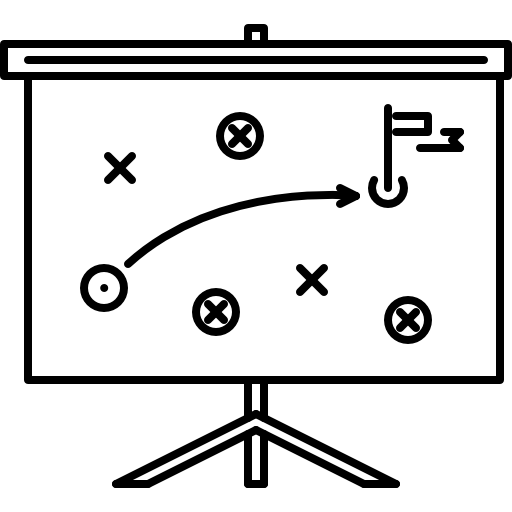Telemedicine Guide: Medicare Coverage and The Medical Billing Process
By: Gilbert Johnston
Every year, telemedicine grows in popularity. More than half of U.S. hospitals already have some sort of telemedicine program, and countless more hospitals are currently developing programs. By 2022, analysts believe that the telemedicine industry will be worth as much as $70 billion.
To accommodate this growing healthcare trend, commercial health insurers are increasingly adopting new telemedicine coverage plans, as well as expanding existing plans. For physicians looking to grow their practices, now is the time to jump into Telehealth, as coverage has expanded to the point where it makes fiscal sense. In fact, most mid-range insurance plans now cover telemedicine to some extent.
However, before jumping into this new form of care, it’s important to understand how the reimbursement process works. As with most new forms of medical treatment, The Centers for Medicare and Medicaid Services (CMS) has set the initial coverage standards through Medicare. The commercial carriers have followed suit, with similar coverage rules.
Below, we go through Medicare’s Telemedicine rules and processes, including what makes a patient eligible, what makes a provider eligible, and what forms of treatment are covered. We also explain how to bill for Telehealth services and provide the full list of accepted CPT codes.
1) Covered Patients and Facilities
For telemedicine, the CMS reserves coverage to patients for which telemedicine may be the most convenient form of care. Put more simply, patients can utilize telemedicine when they don’t have easy access to a specific form of care.
The CMS refers to an area lacking convenient coverage as a Health Professional Shortage Area (or HPSA). An agency called the Health Resources and Services Administration (HRSA) is tasked with determining these areas. Official HPSA status is granted annually. Locations are evaluated (and reevaluated) at the end of each calendar year.
HPSAs are broken up by specialty. Separate shortage areas exist for Primary Care, Dental Health, and Mental Health. So if a patient receives telemedicine treatment for a specific specialty, at a location within a correlating HPSA, he/she may be covered by Medicare.
Note: If a location is not in an HPSA, but the location’s county is outside a Metropolitan Statistical Area (MSA), as determined by the Census Bureau, the patient may still be covered for telemedicine services.
Approved HPSA locations (or facilities) can include:
● Physician and practitioner offices
● Hospitals
● Critical Access Hospitals (CAHs)
● Rural Health Clinics
● Federally Qualified Health Centers
● Hospital-based or CAH-based Renal Dialysis Centers (including satellites)
● Skilled Nursing Facilities (SNFs)
● Community Mental Health Centers (CMHCs)
● Renal Dialysis Facilities
● Homes of beneficiaries with End-Stage Renal Disease (ESRD) getting home dialysis
● Mobile Stroke Units
2) Approved Providers
Simply being located in an HPSA does not mean a patient is covered to receive any and all types of medical treatment via telecommunications. Coverage is limited to specific diagnoses and forms of treatment.
Furthermore, not all medical providers are permitted to provide care. Coverage is limited to:
● Physicians
● Nurse practitioners (NPs)
● Physician assistants (PAs)
● Nurse-midwives
● Clinical nurse specialists (CNSs)
● Certified registered nurse anesthetists
● Clinical psychologists (CPs) and clinical social workers (CSWs)
CPs and CSWs cannot bill Medicare for psychiatric diagnostic interview examinations with medical services or medical evaluation and management services. They cannot bill or get paid for Current Procedural Terminology (CPT) codes 90792, 90833, 90836, and 90838.
● Registered dietitians or nutrition professional
3) Procedural Guidelines
There are also specific guidelines that define telemedicine.
Patents and their providers must communicate via an interactive audio and video telecommunications system, that permits real-time communication.
Non-real-time communication (i.e. transmitting medical information to a physician or practitioner who reviews it later) is permitted only in Alaska or Hawaii via Federal telemedicine demonstration programs.
4) Covered Treatment (CPT Codes)
Medicare covers around 50 Telehealth procedures, which totals to around 70 CPT codes. To bill the codes, providers simply add modifiers to the normal, respective CPT codes. For most procedures, the modifier is GT. For non-real-time communication (in Hawaii or Alaska) the modifier is GQ.
Scroll down to view the full list of covered Telemedicine CPT Codes.
Or check out our Telehealth facility lookup tool, if you’re curious about where Telehealth services are covered.
Wondering whether a facility is approved for Telehealth services?
Check out our Telemedicine Facility (HPSA) Lookup Tool:
Full List of Medicare-Approved CPT Codes for Telemedicine
G0425–G0427
Telehealth consultations, emergency department or initial inpatient
G0406–G0408
Follow-up inpatient telehealth consultations furnished to beneficiaries in hospitals or SNFs
99201–99215
Office or other outpatient visits
99231–99233
Subsequent hospital care services, with the limitation of 1 telehealth visit every 3 days
99307–99310
Subsequent nursing facility care services, with the limitation of 1 telehealth visit every 30 days
G0420–G0421
Individual and group kidney disease education services
G0108–G0109
Individual and group diabetes self-management training services, with a minimum of 1 hour of in-person instruction furnished in the initial year training period to ensure effective injection training
96150–96154
Individual and group health and behavior assessment and intervention
90832–90838
Individual psychotherapy
G0459
Telehealth Pharmacologic Management
90791–90792
Psychiatric diagnostic interview examination
90951, 90952, 90954, 90955, 90957, 90958, 90960, 90961
End-Stage Renal Disease (ESRD)-related services included in the monthly capitation payment
90963
End-Stage Renal Disease (ESRD)-related services for home dialysis per full month, for patients younger than 2 years of age to include monitoring for the adequacy of nutrition, assessment of growth and development, and counseling of parents
90964
End-Stage Renal Disease (ESRD)-related services for home dialysis per full month, for patients 2–11 years of age to include monitoring for the adequacy of nutrition, assessment of growth and development, and counseling of parents
90965
End-Stage Renal Disease (ESRD)-related services for home dialysis per full month, for patients 12–19 years of age to include monitoring for the adequacy of nutrition, assessment of growth and development, and counseling of parents
90966
End-Stage Renal Disease (ESRD)-related services for home dialysis per full month, for patients 20 years of age and older
90967
End-Stage Renal Disease (ESRD)-related services for dialysis less than a full month of service, per day; for patients younger than 2 years of age
90968
End-Stage Renal Disease (ESRD)-related services for dialysis less than a full month of service, per day; for patients 2–11 years of age
90969
End-Stage Renal Disease (ESRD)-related services for dialysis less than a full month of service, per day; for patients 12–19 years of age
90970
End-Stage Renal Disease (ESRD)-related services for dialysis less than a full month of service, per day; for patients 20 years of age and older
G0270, 97802–97804
Individual and group medical nutrition therapy
96116
Neurobehavioral status examination
G0436, G0437, 99406, 99407
Smoking cessation services
G0396, G0397
Alcohol and/or substance (other than tobacco) abuse structured assessment and intervention services
G0442
Annual alcohol misuse screening, 15 minutes
G0443
Brief face-to-face behavioral counseling for alcohol misuse, 15 minutes
G0444
Annual depression screening, 15 minutes
G0445
High-intensity behavioral counseling to prevent sexually transmitted infection; face-to-face, individual, includes: education, skills training and guidance on how to change sexual behavior; performed semi-annually, 30 minutes
G0446
Annual, face-to-face intensive behavioral therapy for cardiovascular disease, individual, 15 minutes
G0447
Face-to-face behavioral counseling for obesity, 15 minutes
99495
Transitional care management services with moderate medical decision complexity (face-to-face visit within 14 days of discharge)
99496
Transitional care management services with high medical decision complexity (face-to-face visit within 7 days of discharge)
99497
Advance Care Planning, 30 minutes
99498
Advance Care Planning, additional 30 minutes
90845
Psychoanalysis
90846
Family psychotherapy (without the patient present)
90847
Family psychotherapy (conjoint psychotherapy) (with patient present)
99354
Prolonged service in the office or other outpatient setting requiring direct patient contact beyond the usual service; first hour
99355
Prolonged service in the office or other outpatient setting requiring direct patient contact beyond the usual service; each additional 30 minutes
99356
Prolonged service in the inpatient or observation setting requiring unit/floor time beyond the usual service; first hour (list separately in addition to code for inpatient evaluation and management service)
99357
Prolonged service in the inpatient or observation setting requiring unit/floor time beyond the usual service; each additional 30 minutes (list separately in addition to code for prolonged service)
G0438
Annual Wellness Visit, includes a personalized prevention plan of service (PPPS) first visit
G0439
Annual Wellness Visit, includes a personalized prevention plan of service (PPPS) subsequent visit
G0508
Telehealth Consultation, Critical Care, initial, physicians typically spend 60 minutes communicating with the patient and providers via telehealth
G0509
Telehealth Consultation, Critical Care, subsequent, physicians typically spend 50 minutes communicating with the patient and providers via telehealth
G0296
Counseling visit to discuss need for lung cancer screening using low dose CT scan (LDCT) (service is for eligibility determination and shared decision making
90785
Interactive Complexity Psychiatry Services and Procedures
96160, 96161
Health Risk Assessment
G0506
Comprehensive assessment of and care planning for patients requiring chronic care management
90839, 90840
Psychotherapy for crisis
G0513, G0514
Prolonged preventive services





